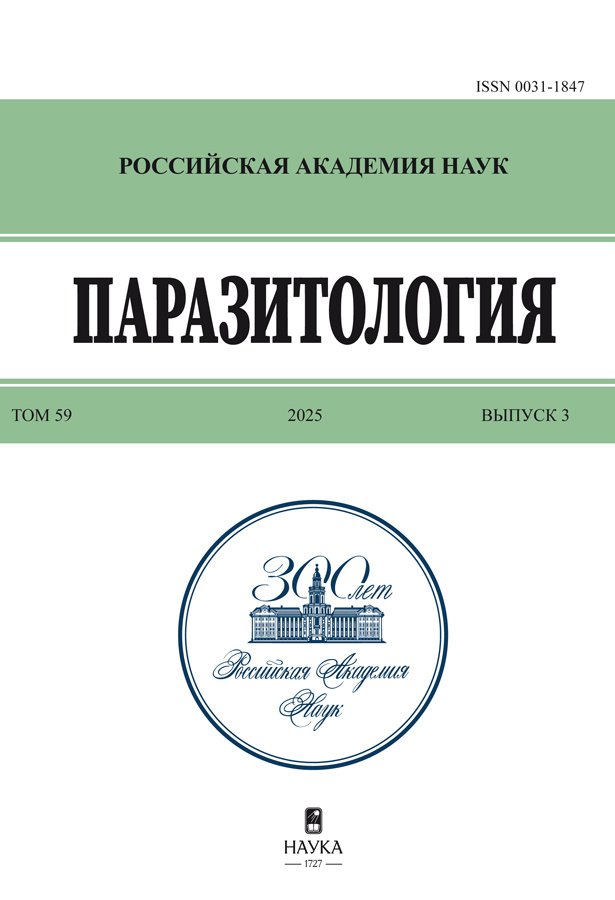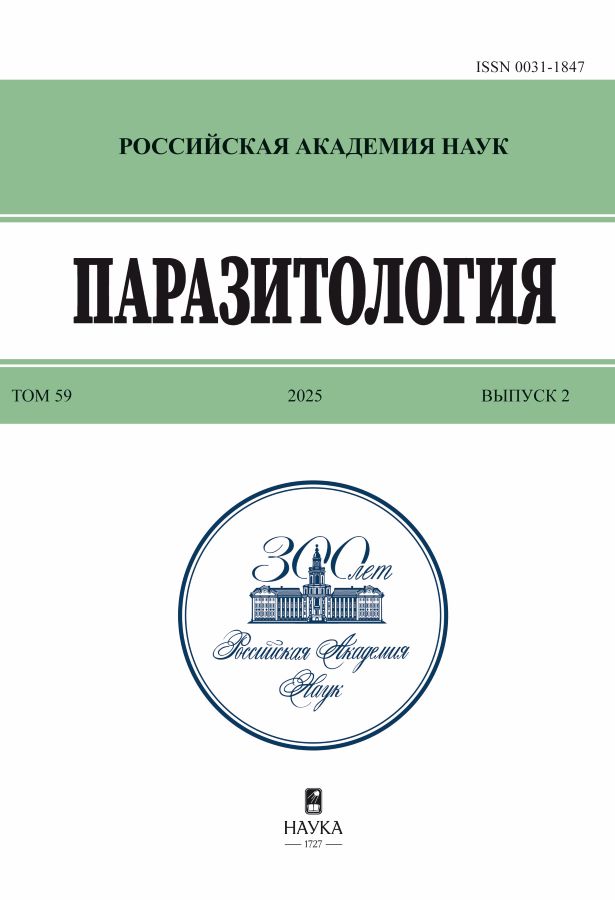Факторы, влияющие на состояние переносчиков лихорадки денге: графическая модель
- Авторы: Насириан Х.1
-
Учреждения:
- Tehran University of Medical Sciences
- Выпуск: Том 59, № 2 (2025)
- Страницы: 172-176
- Раздел: Статьи
- URL: https://rjeid.com/0031-1847/article/view/687017
- DOI: https://doi.org/10.31857/S0031184725020036
- EDN: https://elibrary.ru/tymcpo
- ID: 687017
Цитировать
Полный текст
Аннотация
Графическая модель визуализирует комплексное взаимодействие между разными переменными, влияющими на анализируемый фактор. Модель позволяет оценить факторы, обусловливающие появление очагов лихорадки Денге: неблагоприятные условия внешней среды, отсутствие информации о болезни, миграция населения между разными регионами, социологические и экономические факторы (нищета населения и ограниченный доступ к медицинским учреждениям), изменения климата, глобализация и международный туризм. Графическая схема создана при помощи меню Shape and SmartArt в модифицированной программе Word.
Ключевые слова
Полный текст
Об авторах
Х. Насириан
Tehran University of Medical Sciences
Автор, ответственный за переписку.
Email: hanasirian@yahoo.com
Department of Vector Biology and Control of Diseases, School of Public Health, Institute for Environmental Research (IER)
Иран, TehranСписок литературы
- Ahmadi S., Baghi M., Shirzadegan R., Nasirian H. 2024. Secondary multilevel mixed-effects modelling of the trends in the seroprevalence of Crimean–Congo haemorrhagic fever. East Mediterr Health Journal 30: 68–76. https://doi.org/10.26719/emhj.26724.26006
- Azari-Hamidian S. 2023. The invasive Aedes mosquitoes (Diptera: Culicidae) and their medical and veterinary importance: a mini review. Caspian Journal of Health Research 8: 241–246. https://doi.org/210.32598/CJHR.32598.32594.32473.32592
- Azari-Hamidian S., Harbach R. 2023. Arthropod-borne and arthropod-related viruses in Iran and neighboring countries. Parazitologia 57: 356–440. https://doi.org/310.31857/S0031184723050010
- Kassiri H., Nasirian H. 2021. New insights about human tick infestation features: a systematic review and meta-analysis. Environmental Science and Pollution Research 28: 17000–17028. https://doi.org/17010.11007/s11356-17021-13102-17006
- Nasirian H. 2016. New aspects about Supella longipalpa (Blattaria: Blattellidae). Asian Pacific Journal of Tropical Biomedicine 6: 1065–1075 http://dx.doi.org/1010.1016/j.apjtb.2016.1008.1017
- Nasirian H. 2017a. Contamination of cockroaches (Insecta: Blattaria) to medically fungi: a systematic review and meta-analysis. Journal of Medical Mycology 27: 427–448. http://dx.doi.org/410.1016/j.mycmed.2017.1004.1012
- Nasirian H. 2017b. Infestation of cockroaches (Insecta: Blattaria) in the human dwelling environments: a systematic review and meta-analysis. Acta Tropica 167: 86–98. http://dx.doi.org/10.1016/j.actatropica.2016.1012.1019
- Nasirian H. 2019. Contamination of cockroaches (Insecta: Blattaria) by medically important bacteriae: a systematic review and meta-analysis. Journal of Medical Entomology 56: 1534–1554. https://doi.org/1510.1093/jme/tjz1095
- Nasirian H. 2020. New aspects about Crimean-Congo hemorrhagic fever (CCHF) cases and associated fatality trends: A global systematic review and meta-analysis. Comparative Immunology, Microbiology and Infectious Diseases 69: 101429. https://doi.org/101410.101016/j.cimid.102020.101429
- Nasirian H. 2022a. Detailed new insights about tick infestations in domestic ruminant groups: a global systematic review and meta-analysis. Journal of Parasitic Diseases 46: 526–601. https://doi.org/510.1007/s12639-12021-01460-12634
- Nasirian H. 2022b. Ticks infected with Crimean-Congo hemorrhagic fever virus (CCHFV): a decision approach systematic review and meta-analysis regarding their role as vectors. Travel Medicine and Infectious Disease 47: 102309. https://doi.org/102310.101016/j.tmaid.102022.102309
- Nasirian H. 2023. Monitoring of hard tick parasitism in domestic ruminants: a scale evidence for policymakers. Veterinary Parasitology: Regional Studies and Reports 41: 100878. https://doi.org/100810.101016/j.vprsr.102023.100878
- Nasirian H. 2024a. Comprehensive new information on the distribution and pathogenicity of leishmaniasis, the factors causing its emergence in new areas and affecting pathogenicity in Iran. Biology Bulletin Reviews 14: 804–811. https://doi.org/810.1134/S2079086424600541
- Nasirian H. 2024b. Distribution of dengue fever in Iran’s neighboring countries and the risk of transmission to Iran: a mini-review. Caspian Journal of Health Research 9: 159–162. https://doi.org/110.32598/CJHR.32599.32593.31107.32592
- Nasirian H. 2024c. The introduction and establishment of dengue disease in a new area: a mini review. Caspian Journal of Health Research 9: 51–56. https://doi.org/10.32598/CJHR.32599.32591.31107.32591
- Nasirian H. 2024d. Monitoring the impact, trends, and impact levels of factors affecting Pediculus capitis infestation in primary school students: an illustrate scale evidence review. Journal of Public Health 32: 1479–1557. https://doi.org/1410.1007/s10389-10023-01863-y
- Nasirian H. 2025. Factors affecting establishment of dengue fever vectors in urban areas. East Mediterr Health Journal 31, 6–10. https://doi.org/10.26719/22025.26731.26711.26716
- Nasirian H., Ahmadi S.A.Y. 2024a. New aspects concerning Pediculus capitis (Anoplura: Pedicullidae) infestation in Iran. Parazitologiâ 58: 355–451. https://doi.org/310.31857/S0031184724050016
- Nasirian H., Ahmadi S.A.Y. 2024b. Pediculus capitis (Anoplura: Pedicullidae) infestation in preschool and primary school students and the community: a global-scale evidence review. International Journal of Tropical Insect Science 44: 441–536. https://doi.org/410.1007/s42690-42023-01129-w
- Nasirian H., Zahirnia A. 2021. Detailed infestation spectrums about biological stages of hard ticks (Acari: Ixodida: Ixodidae) in humans: a systematic review and meta-analysis. Acta Parasitologica 66: 770–796. https://doi.org/710.1007/s11686-11021-00362-y
- Xia F., Sun K., Yu S., Aziz A., Wan L., Pan S., Liu H. 2021. Graph learning: a survey. IEEE Transactions on Artificial Intelligence 2: 109–127. https://doi.org/110.1109/TAI.2021.3076021
Дополнительные файлы












